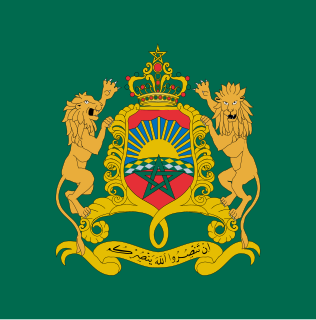
Tokugawa Yorifusa, also known as Mito Yorifusa, was a Japanese daimyō of the early Edo period.

The Alaouite dynasty, or Alawite dynasty, is the current Moroccan royal family. Sharif ibn Ali became Prince of Tafilalt in 1631. His son Mulay Al-Rashid (1664–1672) was able to unite and pacify the country.

Brest Litovsk Voivodeship was a unit of administrative territorial division and a seat of local government (voivode) within the Grand Duchy of Lithuania since 1566 until the May Constitution in 1791, and from 1791 to 1795 as a voivodeship in Poland. It was constituted from Brest-Litovsk and Pinsk counties.
This is a timeline of the history of piracy.

Isenburg was a region of Germany located in southern present-day Hesse, located in territories north and south of Frankfurt. The states of Isenburg emerged from the Niederlahngau, which partitioned in 1137 into Isenburg-Isenburg and Isenburg-Limburg-Covern. These countships were partitioned between themselves many times over the next 700 years.
Wied was a County of Rhineland-Palatinate, Germany, located on the river Wied where it meets the Rhine. Wied emerged as a County earlier than many other German states. From 1243–1462, Wied was united with an Isenburgian County as Isenburg-Wied. Wied was partitioned twice: between itself and Wied-Dierdorf in 1631, and between Wied-Neuwied and Wied-Runkel in 1698. Via William of Albania, the House of Wied ruled the Principality of Albania in 1914.
Nieder-Isenburg was a small mediaeval County in northern Rhineland-Palatinate, Germany. It was located to the east of the town of Neuwied, due north of Vallendar.

Runkel is a town on the Lahn River in Limburg-Weilburg district in Hesse, Germany.

Sir Thomas Widdrington SL was an English judge and politician who sat in the House of Commons at various times between 1640 and 1664. He was speaker of the House of Commons in 1656.
The following entries cover events related to the study of archaeology which occurred in the listed year.

Louis Henry of Nassau-Dillenburg, was Count, and from 1654 Prince of Nassau-Dillenburg. During the Thirty Years' War, he was a senior officer. He climbed to the rank of Major General. Before 1635, he served on the Protestant side; after 1635, he served in the imperial army.
The Dean of Down is based in The Cathedral Church of the Holy and Undivided Trinity, Downpatrick within the Diocese of Down and Dromore of the Church of Ireland.

Runkel Castle, a ruined hill castle from the High Middle Ages, is located in the city of Runkel in the Landkreis Limburg-Weilburg in the state of Hesse, Germany.

The Liebfrauenkirche in Trier, is, along with the Cathedral of Magdeburg the earliest Gothic church in Germany and falls into the architectural tradition of the French Gothic cathedrals. It is located next to the Trier Dom. It is designated as part of the Roman Monuments, Cathedral of St. Peter and Church of Our Lady in Trier UNESCO World Heritage Site.
This page is based on this
Wikipedia article Text is available under the
CC BY-SA 4.0 license; additional terms may apply.
Images, videos and audio are available under their respective licenses.








